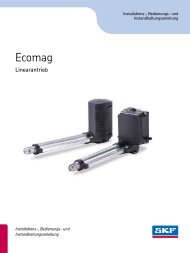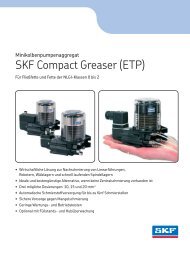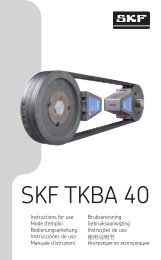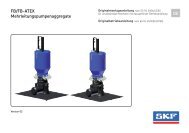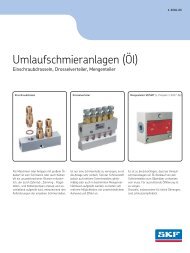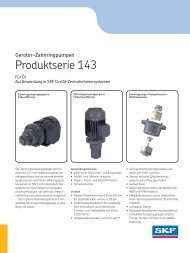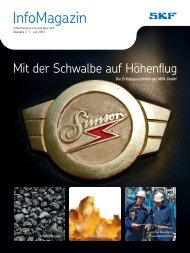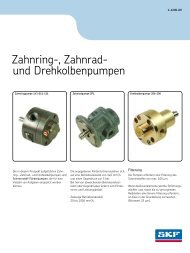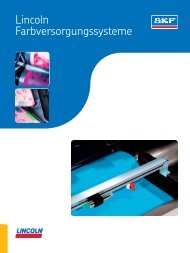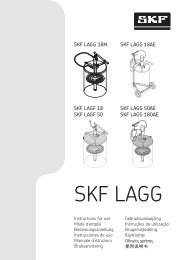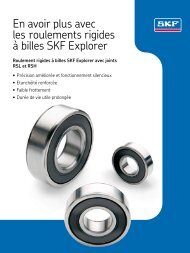SKF Timing Belt Kits - SKF.com
SKF Timing Belt Kits - SKF.com
SKF Timing Belt Kits - SKF.com
You also want an ePaper? Increase the reach of your titles
YUMPU automatically turns print PDFs into web optimized ePapers that Google loves.
Engine drive systems<br />
Technology and material changes<br />
Many <strong>com</strong>ponents and systems in the engine depend<br />
on the correct functioning of the timing and auxiliary<br />
drives. This is also driving the technology and design<br />
of these systems, so they can live up to the more<br />
demanding criteria required.<br />
<strong>Timing</strong> drive system<br />
The controlled operation of this system is dependant<br />
on either a chain or a belt. A general drive for design<br />
improvement for performance gain, coupled with the<br />
pressure to reduce emissions, have seen twin overhead<br />
cam, multi-valve engines be<strong>com</strong>e <strong>com</strong>monplace.<br />
<strong>Timing</strong> belt<br />
A timing belt is typically rubber with high-tensile fibers<br />
(e.g. fiberglass or Kevlar) running the length of the<br />
belt. Rubber degrades with higher temperatures and<br />
contact with motor oil and antifreeze. Therefore, the life<br />
expectancy of a timing belt is lowered in hot or leaky<br />
engines. While older belts were of chlorobutadiene<br />
rubber material and trapezoidal shape, today’s modern<br />
belts are even more specific to particular engine<br />
designs, with subtle profile changes to the curvature<br />
of the teeth. In addition the improved material means<br />
these new designs optimize the power transfer without<br />
wear or noise, reaching ever higher lifespans in excess of<br />
over 93,000 mi/150 000 km.<br />
<strong>Timing</strong> chains<br />
Encased on the front of the engine, this power<br />
transmission drive frees up space to give the auxiliary<br />
system more space. On average, these chain systems<br />
have a longer life span on recent engines. The typical<br />
life of a chain is around 74,500 – 155,300 mi/120 000<br />
km – 250 000 km. The disadvantage with chains is that<br />
they are noisy in <strong>com</strong>parison with belts and they lack<br />
the capacity to handle modern hp injection systems.<br />
In the immediate future (5–10 years), new cars sold<br />
with chains fitted on the engine drive system will rise by<br />
around 50%.<br />
<strong>Timing</strong> system, belts vs. chains<br />
For car manufacturers, engine assembly is all about<br />
numbers built – faster. Unfortunately, the time taken<br />
for the ABTU and belt on the timing system to be set up<br />
correctly, can eat into production time. Chains are easier<br />
and faster to install. This fact contributes to the use of<br />
chains today. The use of high performance material such<br />
as HSN, advanced automatic tensioner units, specialized<br />
bearings and pre-set tensioner springs for speedier and<br />
easier mounting, adds up to belt systems that reach<br />
the life time level of chains, while still offering design<br />
flexibility, cost and weight savings, as well as easier<br />
maintenance in the aftermarket. This is an advantage<br />
when it <strong>com</strong>es to car manufacturers’ choice. But, for<br />
now, chains are still the preferred option.<br />
<strong>Timing</strong> belt system<br />
<strong>Timing</strong> chain system<br />
3



